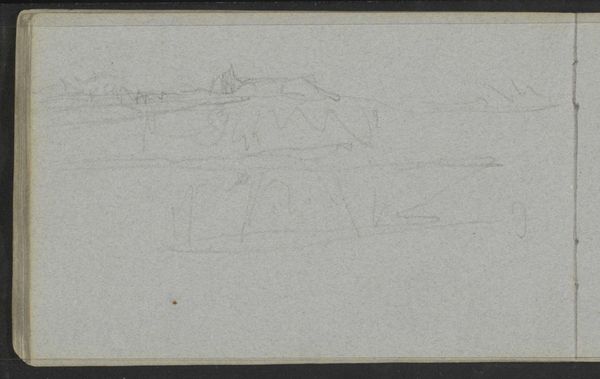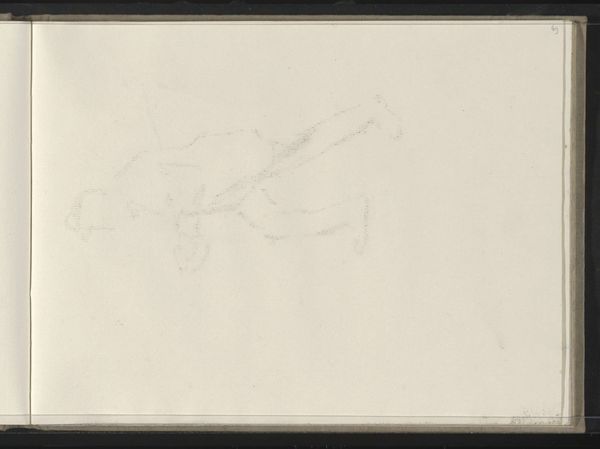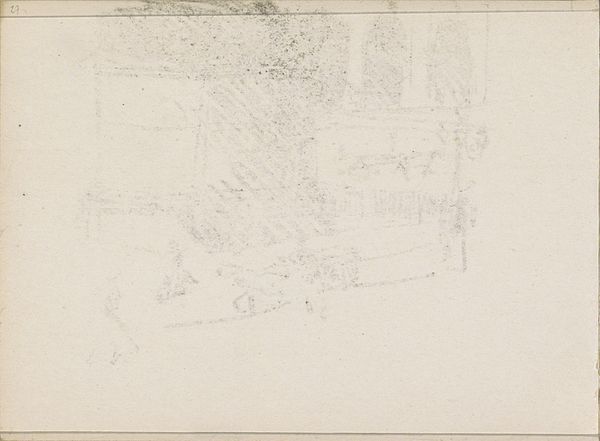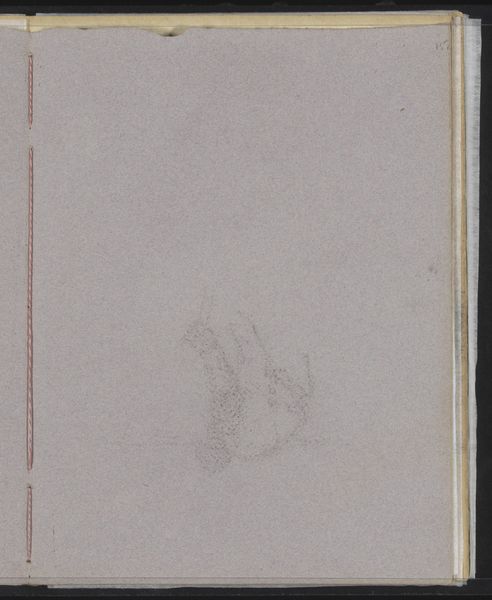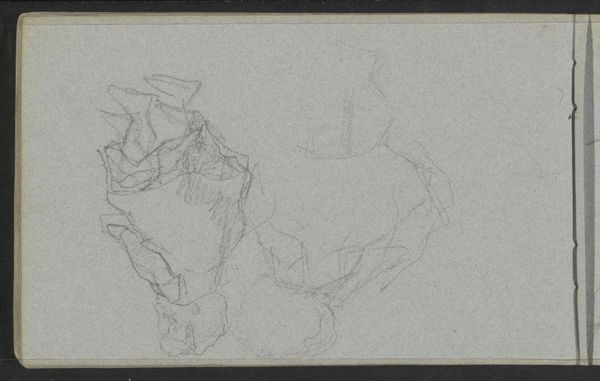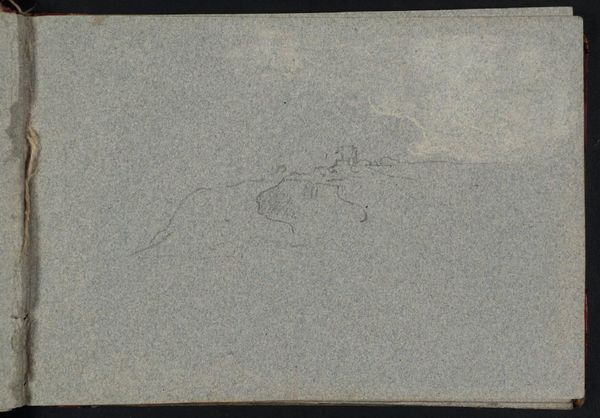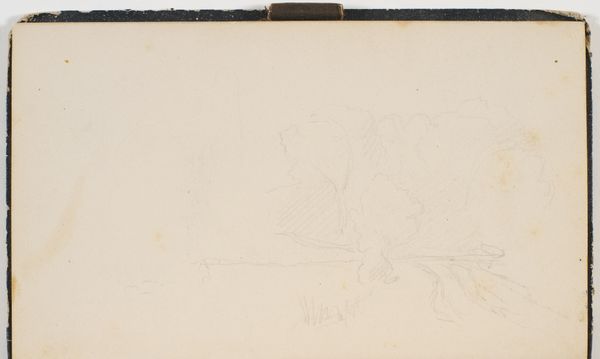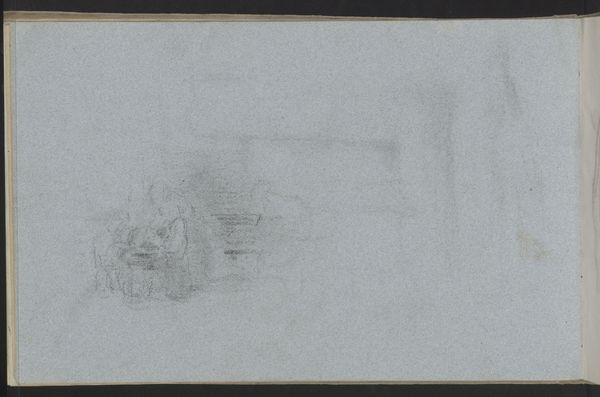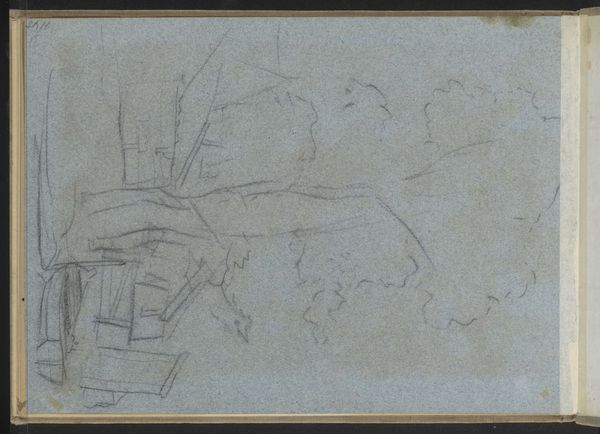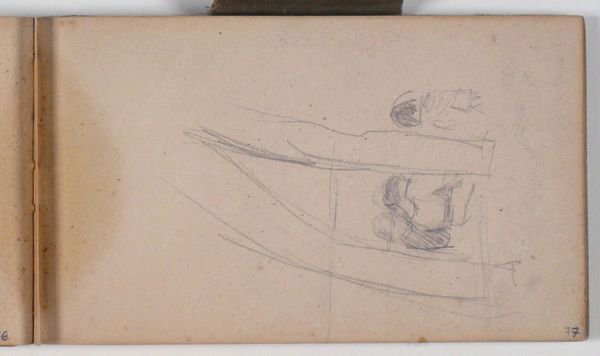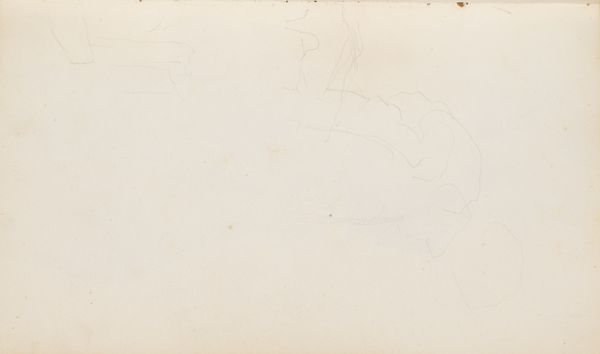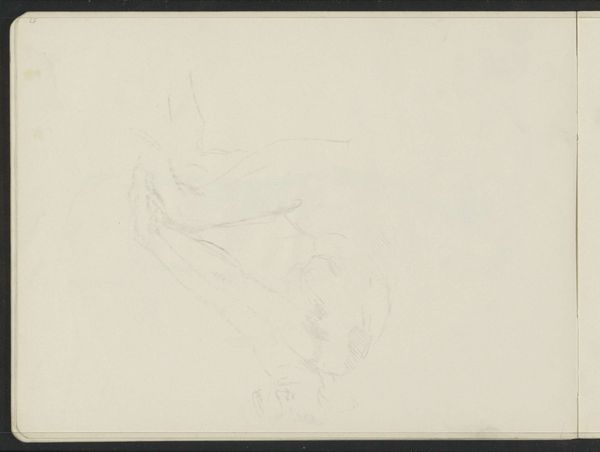
drawing, paper, pencil
#
portrait
#
drawing
#
aged paper
#
toned paper
#
light pencil work
#
homemade paper
#
impressionism
#
sketch book
#
incomplete sketchy
#
hand drawn type
#
figuration
#
paper
#
personal sketchbook
#
pencil
#
sketchbook drawing
#
sketchbook art
Copyright: Rijks Museum: Open Domain
Curator: Here at the Rijksmuseum, we have a subtle yet compelling sketch by Matthijs Maris, created sometime between 1849 and 1917, titled "Staand meisje, op de rug gezien," or "Standing girl, seen from the back." It’s rendered in pencil on paper. What are your initial thoughts? Editor: It's ethereal, almost disappearing into the aged paper. The figure is barely there, a whisper of a girl. There’s a real fragility to it. Curator: Yes, and consider the labor implied by the sketchbook format itself. It suggests a constant practice, a dedicated investigation into form and light within a very intimate setting. It begs the question, what role does inexpensive, easily accessible paper play in making artistic expression widely accessible, especially for the aspiring artist? Editor: The light pencil work is crucial here. The lines are so faint; the structure isn’t overtly stated, and the soft gradations provide the tonal elements. It’s an exercise in pure form and line. Curator: Looking at the medium, the rough, textured paper also is integral. It wasn’t a pristine, mass-produced surface; the drawing feels as if it could be from a homemade sketchbook, hinting at Maris's resourcefulness. Editor: Do you think there’s an argument to be made that this incomplete, sketchy quality reveals the artist's own search, an evolution in the process, a step toward creating other representational art? The intimacy and vulnerability is heightened precisely because of its unfinished nature. Curator: That's right. The artist used basic, widely available materials, like the personal sketchbook, suggesting that great art does not necessarily need rare commodities. It might even challenge our definition of ‘great’ or ‘complete’ altogether. What are your final thoughts? Editor: Ultimately, this work captivates by suggesting what could be rather than rigidly dictating it. This contributes to the artwork's inherent grace. Curator: Agreed, examining this piece lets us delve deeper into the socioeconomic context of art creation. Thanks.
Comments
No comments
Be the first to comment and join the conversation on the ultimate creative platform.
